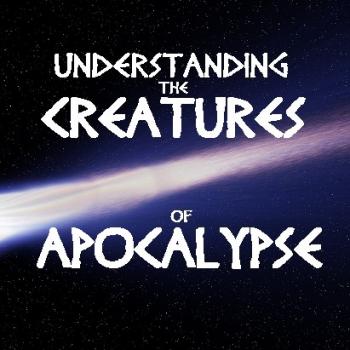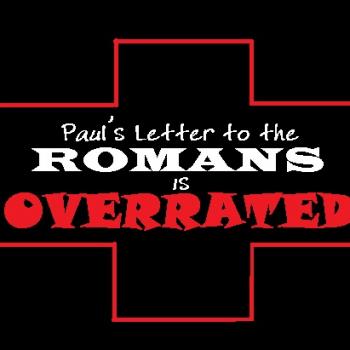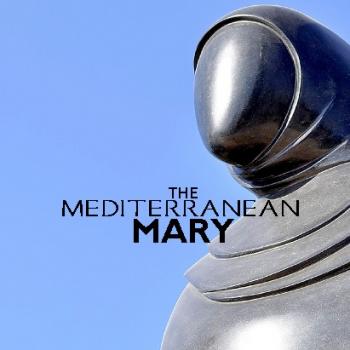Difficulties abound for Western Bible readers expecting of the Gospels the kind of fact-precise, historically accurate material found in contemporary biographies.
Difficulties ahead for fundamentalists reading this! Biblical peoples—whether inspired authors or the characters they wrote about—lacked our historical interests. They didn’t obsess over the line dividing fact and fiction, historical exactitude, detailed precision and accuracy. Their interests were theological. As we have seen, if they could extrapolate from Jesus and arrive at wisdom that was of “the Spirit of Jesus,” then they might consider that gift a Jesus-saying.
This causes contemporary Biblical scholarship extreme difficulties in distinguishing a saying that did originate from the historical Jesus from something his later followers said and attributed to him. But it gets even more complicated once theological belief is mixed in. The difficulties worsen. And this applies also to the actions of Jesus found within the Gospels and elsewhere. Difficulties for scholars, and difficulties for average Christians in American pews, emerge.
Scholars like Richard Rohrbaugh explain that early Jesus group people from New Testament times did not distinguish between the actual sayings of the historical Jesus, the Galilean folk healer, and the sayings of the Spirit of Jesus in the first century Jesus Groups living decades after. With the doings of Jesus, we have something similar at work. Therefore the Gospels cannot be biographies or history books as we 21st century folks understand and use these terms. It is easy to demonstrate this, but to many American Christians, great difficulties lie in accepting it.
Difficulties with the Weekday of Crucifixion
Every Catholic will tell you Jesus was crucified on a Friday. Annually we observe Good Friday of the Lord’s Passion. For centuries Catholics and other Christians—Orthodox, Anglicans, and Methodists—have abstained from eating meat and have fasted on Fridays in commemoration of the Crucifixion. Fridays are the occasion of the Sorrowful Mysteries of the Rosary. But from where do we associate Friday, rather than any other weekday, with Jesus’ sorrowful Passion?
Which Day Do the Gospels Say?
Turning to the Gospels, which are the primary sources for learning about Jesus, we see that in the Synoptics (i.e., “Mark,” “Matthew,” and “Luke”) that Jesus was crucified after Passover had begun. These Gospels tell us that this happened on a Friday. Jesus had already shared the Passover meal with his inner circle, the Twelve. This Passover meal had obviously occurred after the Passover lambs had been slaughtered—
Mark 14:12 [THURSDAY]
On the first day of the Feast of Unleavened Bread, when they sacrificed the Passover lamb, his disciples said to him, “Where do you want us to go and prepare for you to eat the Passover?”
Mark 14:16 [SAME DAY, THURSDAY]
The disciples then went off, entered the city, and found it just as he had told them; and they prepared the Passover.
Mark 14:17-18 [the Last Supper, in the Synoptics, is a Passover Meal—THURSDAY EVENING]
When it was evening [SAME DAY], he came with the Twelve. And as they reclined at table and were eating, Jesus said, “Amen, I say to you, one of you will betray me, one who is eating with me.”
Mark 14:32, 46 [THAT NIGHT, THURSDAY, AFTER THE PASSOVER MEAL]
Then they came to a place named Gethsemane, and he said to his disciples, “Sit here while I pray.” … At this they laid hands on him and arrested him …
Mark 15:1 [THE NEXT DAY, FRIDAY]
As soon as morning came, the chief priests with the elders and the scribes, that is, the whole Sanhedrin, held a council. They bound Jesus, led him away, and handed him over to Pilate.
Mark 15:25 [SAME DAY, FRIDAY]
It was nine o’clock in the morning when they crucified him.
Mark 15:33-34, 37 [SAME DAY, FRIDAY]
At noon darkness came over the whole land until three in the afternoon. And at three o’clock Jesus cried out in a loud voice, “Eloi, Eloi, lema sabachthani?” … Jesus gave a loud cry and breathed his last.
Mark 15:42 [SAME DAY, FRIDAY]
When it was already evening, since it was the day of preparation, the day before the Sabbath…
The Sabbath corresponds to Saturday. The day before, therefore, is a Friday. So, accordingly, the Synoptic Gospels (following “Mark”) hold that Jesus was crucified on a Friday, the day after a Passover Meal (which needed a slaughtered Passover lamb). This Feast then, according to the Synoptics, was celebrated on a Thursday. This then is the origin of our Holy Thursday and Good Friday observances.
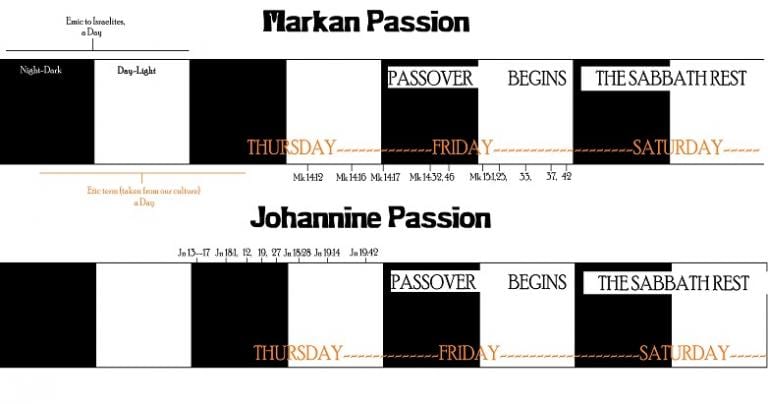
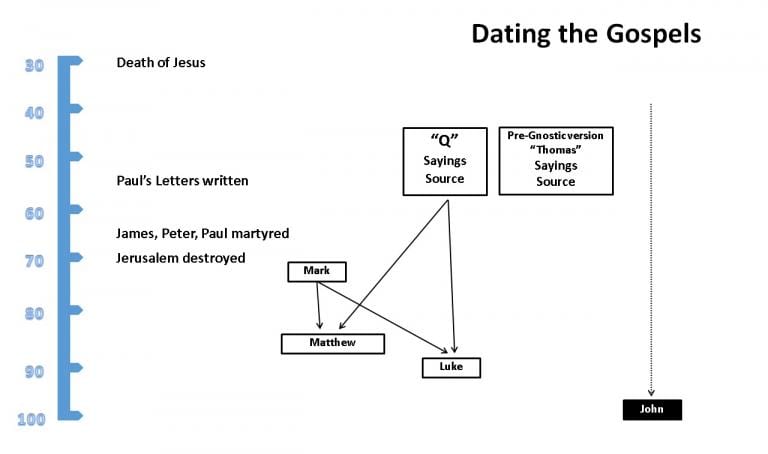
Difficulties with “John”: Jesus Dies on a Different Day!
But hold on! We have a major disagreement in the Fourth Gospel we call “John.” According to that very different text, Jesus is crucified on a Thursday, just before Passover even begins. We know this because “John” reports that the lambs for the Passover meal were slaughtered at the same time Jesus is crucified (John 19:14)! Unlike “Mark” who says Jesus was crucified at 9 am (Mark 15:25), “John” says this happened at noon, which happens to be the exact time that the Passover lambs were slaughtered in those days. That means that the Last Supper in John 13:1—17:26 is just a farewell dinner and not a Passover Meal (in major disagreement with the Synoptics)! Sorry American Bible readers, but this is impossible to reconcile.
A fundamentalist Christian, upon seeing stuff like this, begins performing the somersaults and back-flips of preposterous mental gymnastics, attempting to make squares fit into circles, to harmonize what can never be harmonized. Meanwhile many skeptical atheists reading this, thinking themselves modern historians, will look at these very real contradictions and laugh mockingly at the poor historiography of “John” and the Synoptic Gospels. “What maroons! They can’t even agree on the days of the week!”
Both Western groups are approaching this situation wrongly. Neither “John” nor the Synoptics ever intend to give readers anything like 21st century Western histories or biographies.
Difficulties Stem from Western Demands
Rohrbaugh informs us that “John” wants to communicate that Jesus is the Lamb of God slain for the sins of the “world” [Johannine antilanguage for the dominant society of first century Israel]—John 1:29. But how can he craft that theological expression? Luckily for “John,” historical chronology comes a distant second to his theology. So he easily reshapes events so as to have the crucifixion happening simultaneously when Judean families are killing their Passover lambs at the Temple. Voila! It works.
Notice “John” freely rearranges history to serve his theological needs. That’s true with all the Gospels, really. That’s true with all biblical authors, in fact. The Bible was not written for, by, or about Americans. Western concerns for factual precision and historical accuracy are nowhere to be found within the sacred Scriptures! To make anachronistic demands on these ancient authors and their audiences is stupid and unfair.
Difficulties with Cleansing the Temple
Consider the outrage of Jesus against those bastard money-changers in the Temple. All four canonical Gospels depict this (Mark 11:15-18; Matthew 21:12-17; Luke 19:45-48; John 2:14-25). When reading the Synoptic Gospels, we see that Jesus expels the money-changers from the Temple during the last week of his life. In doing this, Jesus publicly humiliates the Judaean elites. They respond in typical Mediterranean fashion—by using overwhelming force (that of imperial Rome) to crush Jesus. The Synoptics remember that this very public outburst of Jesus probably was the very act where Jesus stepped over the line and got killed for doing so.
And indeed, were a first century Galilean peasant in this honor-shame culture to actually did pull off such a stunt, it would have certainly guaranteed his death sentence. This being Jesus’ final public act which spelled his doom is therefore culturally plausible. Any fundamentalistic idea that he could get away doing such an infamy twice, or more, is absurd.
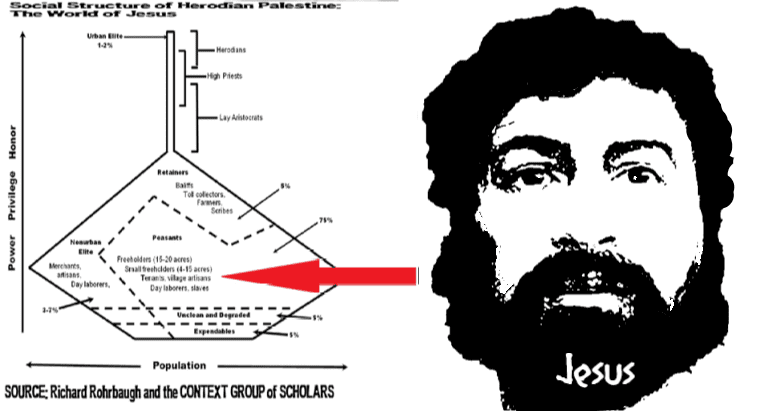
Again, “John” Disagrees!
But when we turn to “John,” we should be startled to learn that Jesus “cleansing the Temple” is the very first thing he does in public (John 2:14-25). He performs this slap across the face of Judaean elites immediately following the wedding at Cana (John 2:1-12). This is the beginning of his career and political movement—and Jesus has three more years of adventures after that (because “John” speaks of three annual Passovers in his narrative, 2:13; 6:4; 13:1)!
Again watch what gets produced by 21st century Westerners seeing these impossible-to-harmonize contradictions. Olympic-level mental gymnastics from Christian fundamentalists and sarcastic dismissals from many with axes to grind against organized religion and Christianity. But their readings are tainted by Western lenses, 2,000 years thick. While there are definitely contradictions between the Gospels, there are no historical problems in “John” or “Mark,” “Matthew” and “Luke.” The problems lie in Western-enculturated brains.
“John” situating this story differently in his text is not due to his ignorance or historical inaccuracy. Rohrbaugh explains that this unnamed author of “John” simply hates Jerusalem, loathes the Temple, and detests everything to do with it. Because of his bitter anti-society animus, “John” moves this event to the beginning of his narrative. To him, the Johannine Jesus is all about overthrowing everything that has to do with that damned stinking-rotten Temple.
The Gospels Cannot Be 21st Century Histories
If you are reading these posts carefully, you should be seeing that the Gospels cannot be anything like historical accounts found in 21st century Western biographies. History and chronology get rearranged by the Gospels. Stories are borrowed freely and reshaped. Wordings are transformed. Things are contextualized anew according to the particularities of different Gospel audiences, those being different Jesus groups living in different Mediterranean places.
Rohrbaugh spells out what results from this. As we mentioned before there are 503 known Jesus-sayings in existence. But scholars have scant confidence in their certainty about these traditions. Which of these sayings were actually spoken by the historical Jesus? And which came later from his followers?
Difficulties with How Long Jesus’ Ministry Was
The Synoptic Gospels basically follow the same narrative pattern set down by “Mark.” Therefore in the Synoptics we read that the public career of Jesus or “the Jesus Movement” lasts only one year in length (really one dry season long).
But in “John” is a story about the ministry of Jesus lasting three years (really three dry seasons). Which is it? Was it one year (one dry season)? Or three years (three dry seasons)? Or something even shorter or longer?
“Mark” produced a chronology lasting one dry season. Both “Matthew” and “Luke” follow the Markan chronology. But “John,” the Gospel from Outer Space, does not follow that chronology whatsoever! So exactly how long was the Jesus Movement? We cannot be certain about this! We simply do not know.
Difficulties with Genealogies
Back in Advent and Christmas time, Messy Inspirations showed you that “Matthew” and “Luke” have genealogies that cannot be harmonized. They are very different! In “Matthew” (1:1-17) we read a genealogy that totals 42 names. Whereas in “Luke” (3:23-38) we read one with 67 names. More to it, the names don’t match!—how can someone have two different paternal grandfathers (compare Matthew 1:15-16 with Luke 3:23)?
Rohrbaugh says that neither genealogy is probably historical (neither was much in their Infancy narratives, by the way). They were made up, written not for 21st century Western concerns and obsessions, but for ancient theological reasons tied to Mediterranean cultural values of honor and shame. “Mark” and “John” give us no genealogies for Jesus. Rohrbaugh says that this fact speaks volumes to scholars as to the historicity of the Matthean and Lukan genealogies.
Difficulties with the “Slaughter of the Innocents”
Back in Christmas time, we learned that no other ancient document besides the Matthean infancy narrative (chapters 1-2) recounts a “slaughter of the innocents” and the Holy Family’s “flight into Egypt” (Matthew 2:13-23). That story says that King Herod the Great hatched a murderous plan to kill every baby boy two years old and younger in Bethlehem and its vicinity (Matthew 2:16). Joseph takes Mary and the baby Jesus down to Egypt-land to escape. That story should sound familiar to readers of the Hebrew Scriptures. It’s strikingly similar to the one given about baby Moses (Exodus 1:15—2:10), who lived 1,400 years before Jesus.
But Rohrbaugh says that this same story was also told about the first ruler of the Akkadian Empire, Sargon the Great. He lived 1,200 years before Moses! Rohrbaugh explains that, by comparing the stories of Sargon and Moses and Jesus, it begins to look like these are three renditions of the same stock story in the repertoire of ancient Near East stories. Whenever storytellers from these lands want to make a point, they bring out the old story, dress it up, and apply it to a new hero.
No other Gospel or New Testament writer besides “Matthew” tells us this story about Herod wickedly trying to murder infants. Josephus hates Herod but is silent about this. Herod the Great was hated and writers preserved stories which celebrated his shame and loathsome character long after his death. For centuries a legend persisted about Herod preserving the corpse of his dead wife in honey so that he could continue engaging in sexual acts with her for a year after her demise!—but they say nothing about the infamous slaughter of infants. Rohrbaugh notes that scholars therefore begin to ask, “How does this story fit into ‘Matthew’s’ theological agenda?”
How Does This Story Fit the Matthean Agenda?
So a good question to ask is, “what exactly was the theological agenda of ‘Matthew’?” Rohrbaugh explains that “Matthew” considered Jesus to be the New Israel and the new Moses. In order to present Jesus as such, he plops a Moses-story into his infancy narrative. Did Herod the Great actually try to murder the historical baby Jesus? Did the Holy Family actually go to Egypt? Almost certainly not. But is this account theologically true? Yes it is.
All facts are true, but not all truths are factual truths. Rohrbaugh says that Jesus was, according to the Matthean Jesus group, the new and greater Israel and the new and greater Moses. This is why he employs the old story about Moses (and about Sargon)!—“Matthew” has reshaped it to bring that meaning forth.
But Rohrbaugh confesses that as far as Western scholarship is concerned, the problem has deepened. How can we tell which Jesus-stories correspond to what actually happened to the Jesus of history? And how can we determine which of these were borrowed or invented? This is difficult!
Difficulties with Accounts of the Virgin Birth
Why do only the authors we call “Matthew” and “Luke” write stories of the virgin birth? All twenty-six other New Testament writings are silent about this. Why? If you believed such a wondrous thing about Jesus’ birth, and you were writing about Jesus, how could you fail to mention it?
Rohrbaugh says that this raises a very important question—how do those “virgin birth” stories of “Matthew” and “Luke” serve theological agendas? It was so important to both “Matthew” and “Luke,” but not so much to “Mark” and “John” and Paul and others! Why? Were these other authors ignorant about it?
Let’s be honest—we hardly know anything about the exact historical situation of Jesus’ birth and youth. Was the historical Jesus actually born in Bethlehem? There are scholars like Rohrbaugh who find no reason to disagree that he was—but others think differently. Historically, his parents were called “Mary” and “Joseph.” How can we be sure about much more besides that?
Difficulties with the Resurrection Accounts
Clearly we can see tremendous difficulties for Western Bible readers produced by the theological activity at work in the Infancy Narratives of “Matthew” and “Luke.” So too we find difficulties when reading the various Resurrection accounts!
These Resurrection stories disagree on many details. Who exactly greets the women at the tomb? In “Matthew” it is an angel (Matthew 28:1-5). But “Mark” says it was a young man (Mark 16:1-5). And yet for “Luke” it has become two men wearing dazzling apparel (Luke 24:1-4). What actually happened? How can we know for sure?
Reading “Matthew” we learn that the women run and tell the disciples (28:8). “Luke” reports similarly (24:9). But not “Mark”—he says the women are afraid and shut up like clams, telling no one (16:8). Which of these reports best reflects what really happened?
Why do “Mark” and “Luke” omit the detail found in “Matthew” where the risen Jesus himself comes and meets his disciples (Matthew 28:9-10)? And why is it only “Matthew” who tells about bribing the soldiers (28:11-15)? You can’t find that story of the soldiers being bribed anywhere else in early Jesus group writings! Did “Matthew” include it for his own unique theological agenda? When you see this stuff, how can asking such questions not be legitimate inquiry? Ultimately we must remember that like “Mark” and “Luke,” “Matthew” is painting a theological portrait and not writing a 21st century Western history.
Difficulties with the Emmaus Story
Why is it that “Luke” alone tells of the Emmaus story (Luke 24:13-35)? Two disciples are walking away from Jerusalem on the Sunday following the Crucifixion. Along “the way” to Emmaus, they encounter the risen Jesus, but fail to recognize him. They invite this “stranger” to dinner. As the bread is broken their eyes open and they recognize Jesus—and he vanishes.
Rohrbaugh and other scholars describe this Lukan Easter tale as “a wonderful sacramental story.” It provides a glimpse into the worship of the earliest Jesus groups. They share bread and the wine communally. In a trance, their eyes open and experience the real presence of the Risen Lord and messiah by the power of the Holy Spirit (what cognitive neuroscience would term an altered state of consciousness experience).
But Western brains need to lock things down and control the stories they hear or read. Did it happen? Is this an historical account or BS? How about only partly historical and partly fantasy? Was it invented? Or was it synthesized from real experiences people had of the Risen Lord? O, how the scales can fall from the eyes of Western readers when they realize that ancient authors told stories to convey ideas and not simply to give the facts of the day! But Western folks, Christian or other, will be Western folks. So we ask: what is historical and what is not?
Where did the Resurrection appearances happen? “Matthew” says they all happened in the Galilee. But according to “Luke” they all took place in Jerusalem and nearby. The original form of “Mark” (ending at 16:8) has zero appearances! The maverick antisociety Gospel called “John” lists some appearances in Jerusalem but others happening in the Galilee.
Difficulties with Jesus’ Pre-existence
The Gospels are all true and some of what they report actually happened. The Johannine Jesus is conscious of his pre-existence (John 17:5). But Jesus says nothing about pre-existing or “a life before his earthly life” in the Synoptic Gospels. The Jesuses found in “Mark,” “Matthew,” and “Luke” seem so different than the one found in “John.” They seem to have NO AWARENESS of any pre-existence. Why?
As mentioned earlier, according to “John” the Jesus Movement is largely set in Jerusalem (John 2:13-25) and lasts three dry seasons. But according to the Synoptic Gospels, the Jesus Movement is largely set in the Galilee, and lasts one dry season. Only at the end of Jesus’ ministry does he go up to Jerusalem (e.g., Luke 19:28-48). Why?
Difficulties with Jesus’ Teaching Style and Marvels
Why does the Johannine Jesus teach in long discourses but never parables? In the Synoptics Jesus always employs pithy sayings and parables. In the Fourth Gospel Jesus performs only seven “signs” or “works.” A few of these seven “signs” or “works” can be found nowhere else in the Synoptics (John 2:1-12; 9:1-42; 11:1-44). But in “Mark,” “Matthew” and “Luke,” Jesus performs many “mighty deeds” or “marvels” or “wonders. Why are these texts so different?
Further Difficulties
Why is there only a meager 15.5 percent agreement (or commonality) between the Markan Passion and the Johannine Passion accounts? That means that there is a huge 84.5 percent disagreement between both these Passion stories!
Consider also how Jesus is depicted in the Johannine Passion (John 18:1—19:42). There. the divine, pre-existent Jesus commands the soldiers approaching to arrest him, “Who are you looking for?” (John 18:4, 7) and he knocks them all down by exclaiming “I AM!” (John 18:5-6). And from the Cross, this triumphant Johannine Jesus, someone in absolute control of everything, cries out, “It is finished!” (John 19:30).
In contrast, how utterly human Jesus appears in the Markan Passion (Mark 14:32—15:47). There he cries out in great torment and stress before his arrest, “Abba! Father!” (Mark 14:34-36). From the Cross, the Markan Jesus cries, “My God, my God, why have you forsaken me?” (Mark 15:34).
More later…




